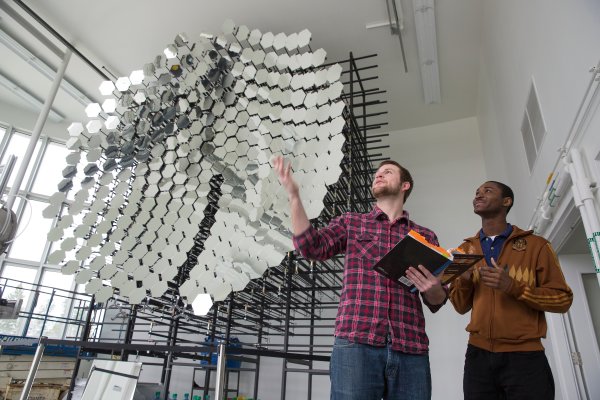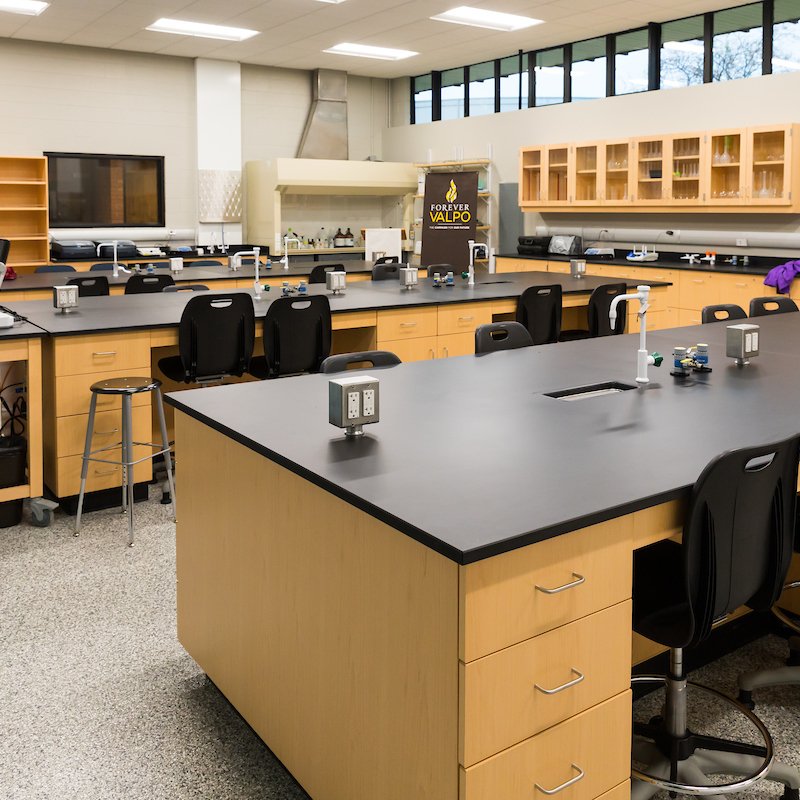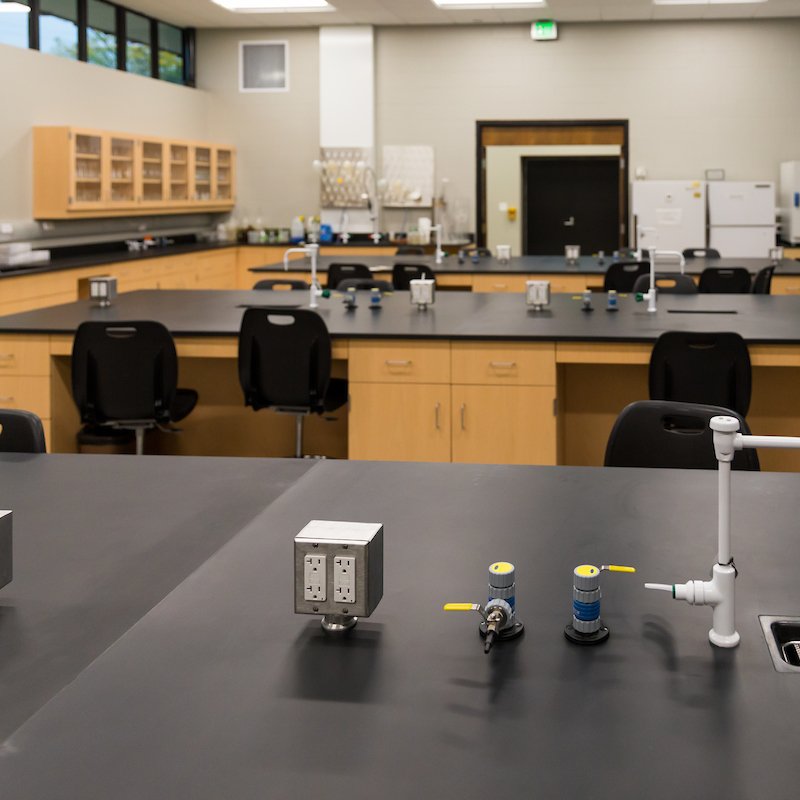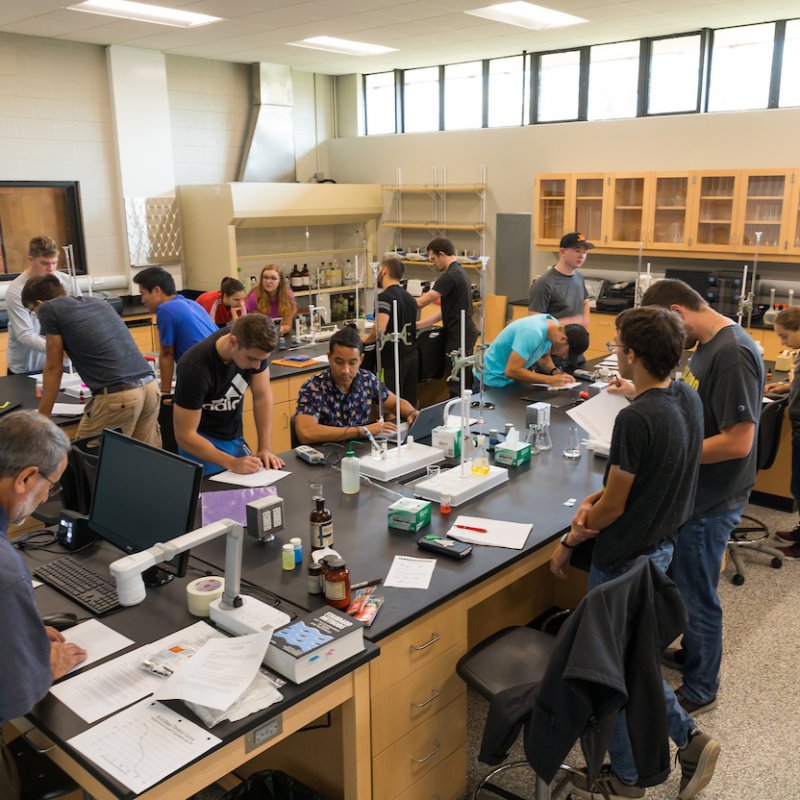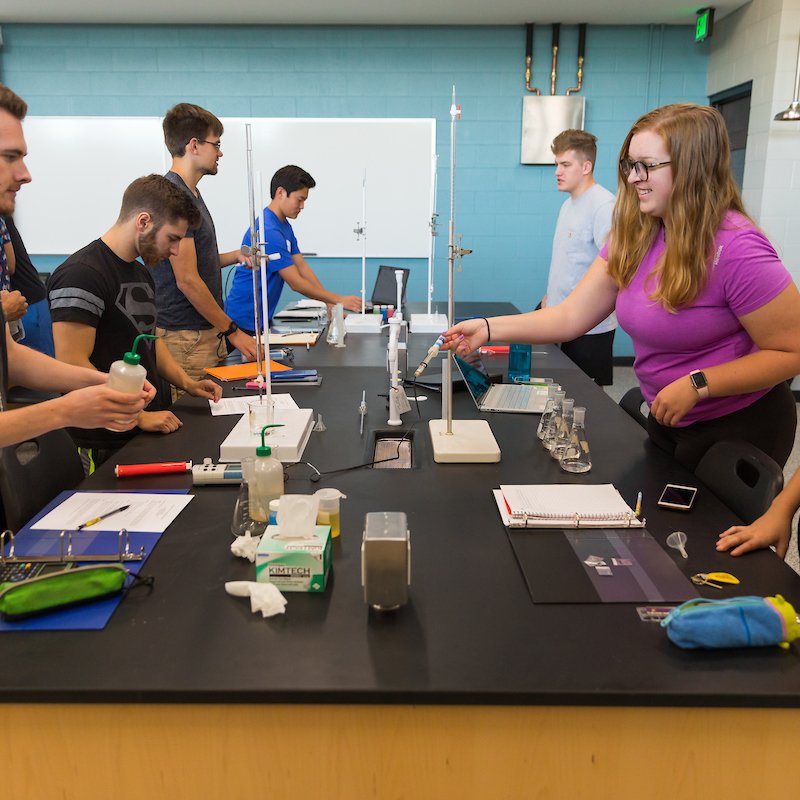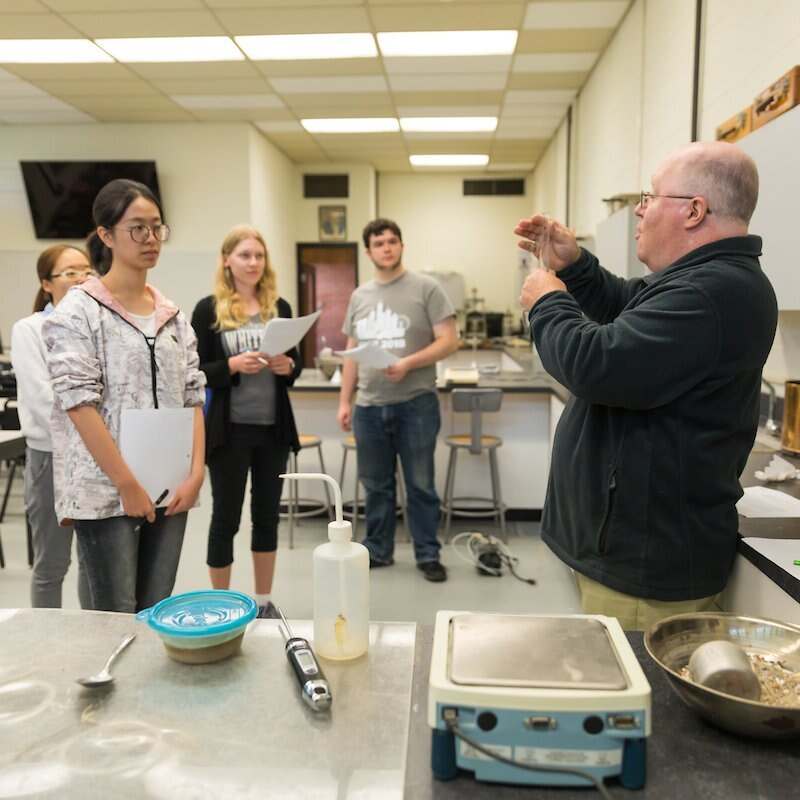Civil and Environmental Engineering Laboratories
The Environmental Engineering Laboratory is used by civil engineering students to perform water quality and environmental studies to determine parameters needed in the design of treatment and remediation systems for drinking water, domestic and industrial wastewater, storm water runoff, and contaminated soil and groundwater.
Equipment
- Batch, Complete Mix, and Plug Flow Reactors for unit operation
- Controlled Stirring Apparatus for jar tests
- Hach Spectrophotometer
- Auto Claver for sterilization
- Platform Shaker to extract contaminants from solid media
The fluid mechanics lab is used to study concepts covered in fluid mechanics class. Topics include flow in open channels such as rivers, flow in closed conduits such as pipes, groundwater flow, hydrostatic forces, hydropower generation, pumps, flow measurement, and drag forces, among other topics. Laboratory experiments give students hands-on experience with concepts used to solve practical engineering problems.
Major Equipment
- Recirculating flume
- Hydropower turbine
- Groundwater flow system
- Pump and pipe systems
- Wind tunnel
The equipment in the geotechnical lab is used to determine the strength, compressibility and permeability of soil specimens. This information is then used to design building foundations, buried structures and tunnels, retaining walls, landfill liners, and earthen structures, and evaluate static and dynamic properties of soils.
Equipment
- Cyclic Simple Shear Test Apparatus
- Cyclic Triaxial Test Apparatus
- Direct Shear Apparatus
- Consolidometer
- Relative Density Shaking Table
- Hydraulic Conductivity Testing Systems
- Compaction Equipment
- Grain Size Analysis Equipment
- Permeameters
- Triaxial Test Apparatus
- Resonant Column
The Senior Design Laboratory in the new Fites Engineering Innovation center is shared by mechanical, civil, and electrical and computer engineering students. Teams of civil engineering students are assigned to work areas that mimic the actual workplace environment that they will encounter upon graduation. Within these areas, the students collaborate on a two semester project to complete a civil engineering project. Examples of projects include highway interchanges, building structures, water removal systems, etc. As an added bonus, senior engineering students have their own workspace for study groups, computer use, etc.
